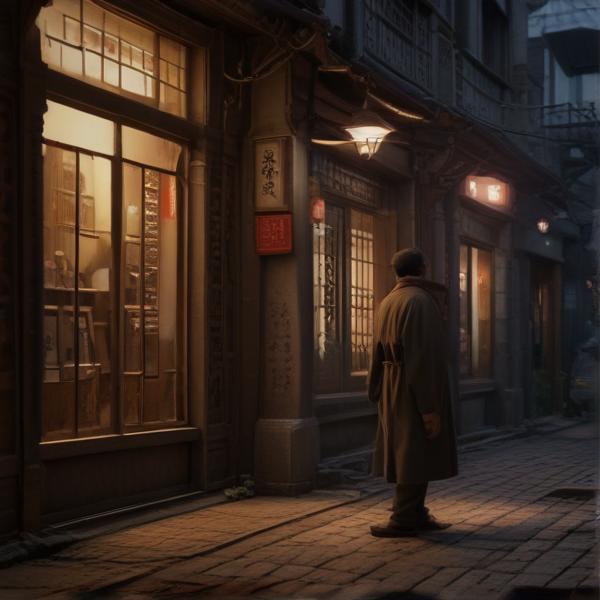基本信息 (Basic Information)
含义与用法 (Meanings & Usage)
中文核心释义 (Core Chinese Meaning): 儿子,子女,也可用于指儿童、小孩子。
英文核心释义 (Core English Meaning): son, child, sometimes used to refer to children in general.
象形意义 / 为何这么写 (Pictographic Meaning / Writing Rationale)
文言文释义 (Classical Chinese Meaning)
文言文中主要指儿子、小孩,与现代意义相近。Similar to modern meaning; mainly referred to 'son' or 'child' in Classical Chinese.
深入学习 (In-depth Study)
字源故事 (Origin Story)
字形演变 (Character Evolution)
常用词语和例句 (Common Words & Examples)
儿子 (son)
他有一个聪明的儿子。
Eng: He has a clever son.
儿童 (child, children)
这个公园里有很多儿童在玩耍。
Eng: There are many children playing in this park.
婴儿 (infant, baby)
小婴儿在妈妈怀里睡着了。
Eng: The baby fell asleep in the mother's arms.
相关成语 (Related Idioms)
相关成语信息待补充。Related idiom information pending.
多语言翻译 (核心释义) (Translations (Core Meaning))
- French: fils, enfant
- German: Sohn, Kind
- Spanish: hijo, niño
- Italian: figlio, bambino
- Portuguese: filho, criança
- Russian: сын, ребёнок
- Arabic: ابن، طفل
- Persian: پسر، کودک
- Dutch: zoon, kind
- Polish: syn, dziecko
- Vietnamese: con trai, trẻ em
- Ukrainian: син, дитина
视频学习资源 (Video Learning Resources)
通过以下链接在热门视频网站搜索 "儿" 的更多讲解:
Search for more explanations of "儿" on popular video sites:
- 在 Bilibili.com 搜索 "儿 字源 说文解字" (Search on Bilibili)
- 在 YouTube.com 搜索 "儿 character origin etymology" (Search on YouTube)
网络参考 (Web References for "儿") ()
网络内容摘要 (Web Content Summary):
```html儿(ér)是一个常用汉字,其繁体为“兒”。最早见于甲骨文,本义为“幼儿”或“小孩”。古代多用于指男孩,女孩称为“婴”,后来泛指所有儿童。 儿 (ér) is a commonly used Chinese character, with the traditional form "兒". It first appeared in oracle bone inscriptions and originally meant "child" or "infant". In ancient times, it mostly referred to boys, while girls were called "婴" (yīng), but later it referred to all children.
“儿”字象形,繁体的“兒”上部分为“首”表示头,下为“儿”表示身体和双腿,形象地表现出幼儿的形态。简化字“儿”则简化自“兒”,去掉了“臼”部。 The character is pictographic: The traditional form "兒" depicts a child's head ("首") and body/legs ("儿"), visually representing a child. The simplified version “儿” comes from removing the "臼" component from "兒".
- 用法提示:在现代汉语中,“儿”常作为名词后缀出现,尤其在口语中有“儿化”(把音节末尾加上“儿”,形成卷舌音),如“花儿”、“门儿”、“桌子儿”。 Usage tip: In modern Chinese, "儿" often appears as a noun suffix, especially in spoken Mandarin as "erhua" (adding a retroflex "r" sound), e.g., "花儿" (flower), "门儿" (door), "桌子儿" (table).
- 易混淆点:“儿”作后缀时在普通话中读作轻声且不单独成音节,和前面的音节连读。如“玩儿(wánr)”。 Common confusion: As a suffix, "儿" is pronounced with a neutral tone in Mandarin and merges with the preceding syllable, e.g., "玩儿" (wánr, to play).
与“儿”相关的常用词有:“儿子”(son)、“女儿”(daughter)、“儿童”(children)、“儿时”(childhood)。 Common words with "儿" include: “儿子” (son), “女儿” (daughter), “儿童” (children), “儿时” (childhood).
```儿(汉语汉字)_百度百科
儿(读作:ér )为现代汉语一级字(常用字) [1] 儿的繁体字"兒",最早见于甲骨文 [2] [10] 其本义为幼兒,古时男称"兒",女称婴,后来孩童都称"兒" [3] ;引申义有兒女对父母的自称、年轻人、青年、古代年轻女子的自称等。 "兒"简化字的"儿"是由兒删减部件"臼"而来。
儿的解释|儿的意思|汉典"儿"字的基本解释 - 漢典
儿. 兒 ér 〈后缀〉 (1) 儿化。汉语后缀的"儿"不自成音节,而和前面一个音节合在一起构成带卷舌韵母r的音节 (2) 多用作名词后缀 (1) ∶表示小。如:盆儿;棍儿;小猫儿;小车儿 (2) ∶表示词性变化。动词名词化,如:唱儿;逗笑儿。
更多图片 (儿 More Images) ()
